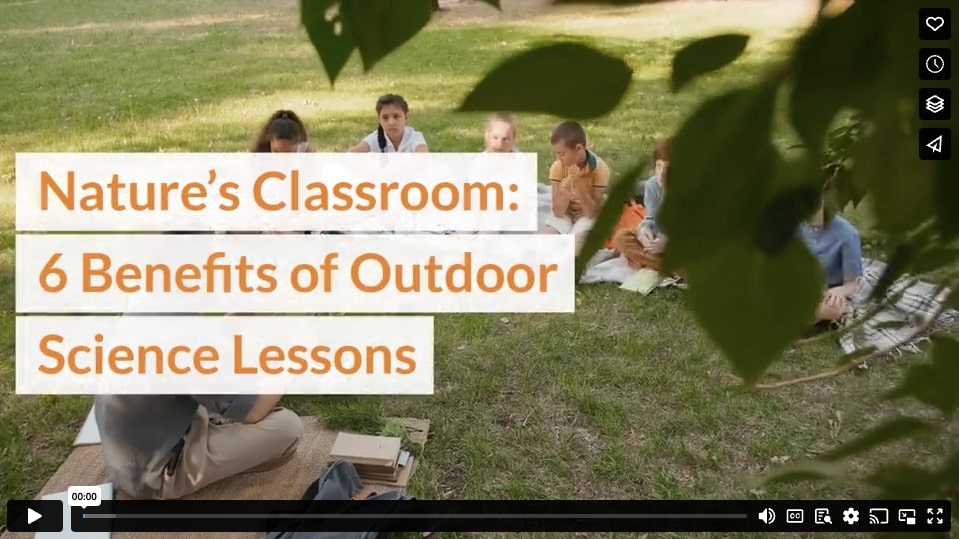Science, to put it simply, is the observation of the world around us. And while textbooks may hold pages, chapters, and volumes of valuable information, nature will always be the most effective teacher.
At our private school in Atlanta, Georgia, we recognize that a purely textbook-based science education can miss the mark when it comes to forging a connection between students and the world around them. While facts on a page may not always inspire curiosity, studies have shown that venturing into nature’s classroom every now and then can positively impact a child’s understanding and retention of natural sciences.
What Does Outdoor Science Exploration Look Like in the School Setting?
Outdoor science lessons will vary from school to school, depending on location. For example, a school in a rural farming community will have different opportunities for learning and exploration than one in the inner city, but that doesn’t mean that children can’t learn valuable lessons simply by stepping out the classroom door.
From the dirt on the soccer field to the variety of plant life on the school grounds, connecting children to the ins and outs of their world can help science truly come to life.
Science-related field trips are also an incredible opportunity for students to explore environments beyond their home. No matter how far their trip outside the classroom takes them, students can understand the world in unforgettable ways through visual and hands-on learning in nature.
How Can I Help Integrate the Outside World with My Child’s Science Education?
Although a well-rounded science curriculum should provide ample opportunity for outside learning and exploration, teachers are somewhat limited by time, location, and the natural resources available to them. As a parent, you have the opportunity to help your child dig deeper. Here are a few ways you can utilize the great outdoors to further your child’s science education:
1. Keep Tabs on What They’re Learning
Try to stay in-the-know when it comes to your student’s science education. If possible, look ahead at what will be taught and when so that you can look for opportunities to expand and explore at home.
2. Go on Family Field Trips
Schools can be somewhat limited when it comes to field trips due to funding and distance. But that doesn’t mean that you can’t embark on your own field trips as a family. If your student is going to be learning about ocean ecosystems, you might consider taking a weekend trip to the coast to explore tidepools. If birds are on the syllabus, you just might discover a bird sanctuary outside the allotted distance for school trips.
3. Put Together a Discovery Kit
Equip your child with the tools they need to take a closer look at the world around them. Depending on age, a Discovery Kit could include items like a magnifying glass, microscope, or field journal.
4. Go For Nature Walks
When we drive down the same streets and pass the same scenery every day, we can forget just how much there is to learn within our own neighborhood. Take your child on a nature walk and stick to a slow pace. Encourage them to observe the spiderweb in the bush that they might normally shy away from or collect rocks, sticks, and leaves to bring back home for further examination.
5. Ask Questions
You can help your child learn to better observe the world around them by asking questions. For older students, this might mean developing a hypothesis and making observations to test their theory. Whenever possible, encourage your child to dig a little deeper and observe their surroundings by asking questions like:
- How do you think the cricket makes that sound?
- Why do you think the woodpecker likes pecking holes in the trees?
- What kind of clouds do you think those are?
- What do you think caused those mushrooms to grow in this specific area?
6. Plant a Garden
There is no better way to understand plant life and growth than by experiencing it firsthand. Carefully plot and plan your garden before you begin so you know what will grow and when. You should also look at the soil in your yard, decide what nutrients it may need to support healthy vegetation, and make sure you have the right gardening tools and supplies. Then, take a field trip to the local nursery and help your children pick a variety of plants, whether flowers, herbs, or vegetables. If you can, try to start with seeds and walk your child through the stages of plant life.
Introducing your child to nature’s classroom will provide new and dynamic approaches to learning. When students are able to not only ingest but experience natural sciences, they are more likely to develop a lasting understanding and passion for the world around them.
Infographic
A well-rounded science curriculum should offer opportunities for outside learning and exploration. As a parent, you can help your child by using the great outdoors to enhance their science education. Check out this infographic for some ideas.
Video


